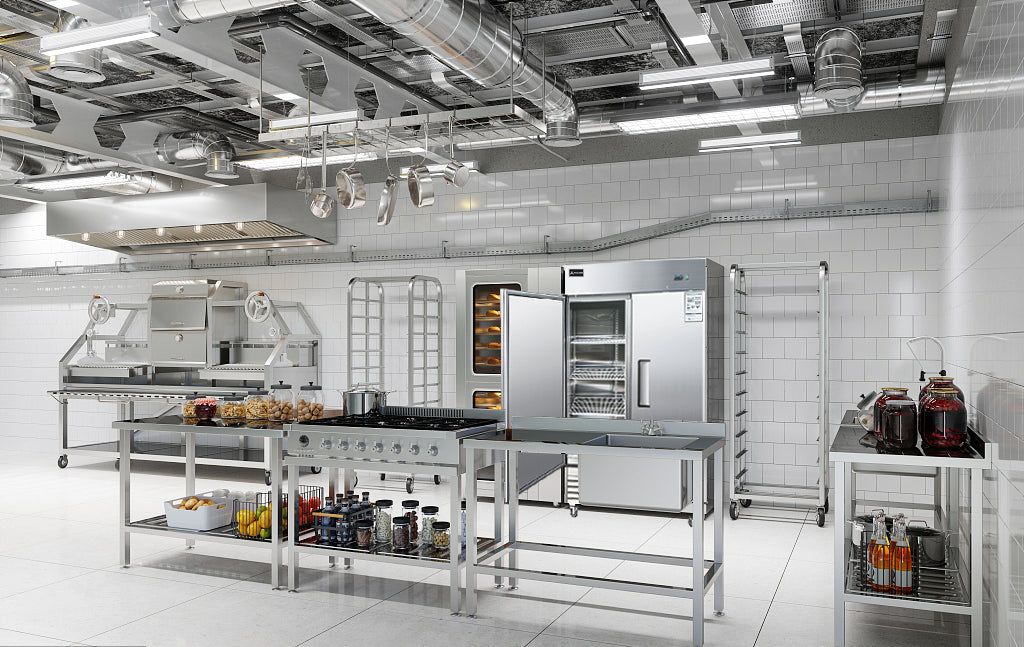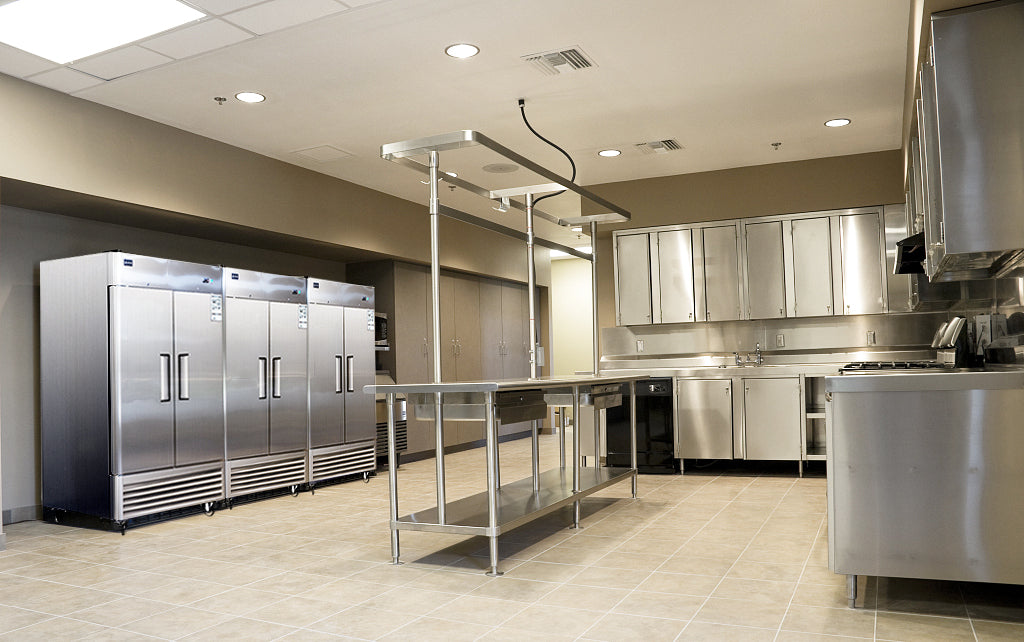Business Plan For Your Foodservice Establishment
The Ins and Outs of Restaurant Business Plans
Imagine opening your own restaurant one day. You've been planning out dishes for years, perfecting your culinary style, establishing a menu, and working with close friends and investors to fund your building…but when you open your doors, you discover there's a popular restaurant with the same concept three blocks away. You try to get the word out about your new business, but you hardly have the time for a marketing campaign as you try to find affordable equipment you've overlooked. Most of this confusion could have been avoided by having a thorough restaurant plan from the very beginning.
Aside from helping you avoid planning fiascos, restaurant business plans will help you find investors, who usually demand a thorough proposal before they consider loaning you funds. In this guide, we will walk you through the most important aspects of writing a business plan for your foodservice establishment.

What Is a Business Plan?
Business plans can be thought of in two ways. The first is like a treasure map. Good business plans lay out concrete goals for you to attain. Like the X on the map, a clear goal enables you to navigate issues and challenges as they arise, even when they are impossible to predict. A clear goal gives you the best possible chance of success. When you create a business plan, you're primarily writing it as a guide for yourself and your employees.
The second way to think about your business plan is as a letter to a potential investor. Be as optimistic as possible, but within reason, and be honest with the people who will trust you with their money. Highlight the strengths of your business concept and show how you plan to overcome your weaknesses. Your business plan should reveal the core of your business and show that it's a viable concept.
How Do You Write a Business Plan?
The Small Business Administration has an excellent guide for writing generic business plans. It provides two different templates for writing a plan: the "traditional" and the "lean" business plans.1
Traditional plans are complete documents with categories such as the executive summary and business organization. Lean plans take less time to write and are formatted in a table to give a panoramic view of your goals, what sets you apart, and basic operational information. Choosing which template is best for you depends on what your potential investors want and how much time and information you have. Try to do as much planning work up front as possible so you don't have to make decisions when crises arise.
Here's an outline of a traditional business plan
Executive Summary
The first section in your business plan should provide an overview of your company and why it will succeed. You also need to be clear about your operation's mission: do you want to create an upscale restaurant focused on farm-to-table dining? Or do you want to bring a unique fast-casual establishment to the area? What evidence do you have that this concept will succeed in the area you plan to build? Think of this as an elevator pitch for your business. It also serves as an outline for the rest of the plan.
Concept and Business Description
After introducing your business, you'll need to provide a more detailed explanation of what it will bring to the community. This is a good place to develop your menu, which you could include at the end of your plan as an appendix. Take time to brainstorm ideas for naming dishes and for how you want to decorate your space. Your brand's concept will be closely tied to how you create your menu and ultimately translate into customer experience. As you develop it, consider what you want your customers to taste, see, and feel.
Market Analysis
A market analysis is one of the most important, yet often neglected, steps to take before opening your doors. It includes a target market, competition analysis, and an evaluation of your market's demand.
Your target market involves researching your own brand and looking at the demographics you're hoping to attract to your restaurant. You can use tools like the US Census Business Builder for demographic and economic data in your region. Your restaurant concept will likely determine what your target audience is. For example, fast food restaurants might attract families as well as working professionals on the go, while bars likely attract a younger to middle-aged crowd.
A competition analysis is exactly what it sounds like: a look at your competitors. For a foodservice operation, this could mean all the restaurants or foodservice business around you, but you should pay special attention to restaurants serving a similar cuisine to yours and restaurants looking to target the same demographic. As you evaluate your competition, perform a "SWOT" analysis: consider their strengths, weaknesses, opportunities for growth, and potential threats. A SWOT analysis helps you get a feel for what your competition is doing well and where they have gaps that you can exploit.
When thinking about how to compete in your market, don't just mimic what the competition is doing; find key differences between your business and theirs and capitalize on them. If they have any glaring weaknesses, try to make those your strengths.
Market demand involves a lot of time-intensive research, finding out if there is a market for your product, and determining what that market wants. To make things easier, you can utilize tools like social media polls to quickly help you get a broad range of perspectives in your area.
You'll also want to include factors such as market size, location, and current market pricing. All this information will be helpful as you think through your own business model and who you want to market to.
Marketing Plan
After researching your market, you'll want to devise a plan to advertise to it. This can include anything from social media marketing to roadside billboards and paper flyers. When creating a marketing plan, think about the kind of marketing that will most effectively reach your target audience. When you generate ideas for marketing, don't focus on your company. Think about who you want to reach and what they need.
Focus your marketing plan on how your operation will meet your customer's needs. What solutions does your business solve? Does it combat unhealthy diets with low-calorie options, or provide fast delivery for people in a rush? By focusing on benefits for the customer, your target market is more likely to patronize your business.
Organizational plan
After creating a marketing plan, you need to determine how you're going to run your business. There are two sides to an organizational plan: the "who" and the "how" of your operation.
First, you need to decide on your business's legal structure and what your management and staffing looks like; this is the "who" side. It's helpful to emphasize the strengths and experience of your management team and to outline clearly defined roles for each team member.
The "how" of your operation involves describing your organizational flow. Outline how your restaurant will work within a planned business structure. Where will you obtain your equipment and ingredients? Where will your operation be based? How will you carry out daily operations? The style and quality of your food has a large impact on many of these questions. Answer them in as much detail as possible; everything you define on the front end will save you time and work on the back end.
Financial Projections
The final section in your restaurant business plan is a critical one: creating a financial breakdown for your business. This includes compiling all your business's current assets and liabilities, a profit and loss statement, and a cash flow statement. The amount of information you have to fill out here will depend on how far along you are in your restaurant process, but the clearer picture you can paint of where you are and where you think you will go, the better.
Two other sections you'll want to add to this part include an operating budget and a break-even analysis.
Budgets should include your monthly estimated revenue, fixed costs, and variable costs. If you don't have solid data on what your expenses will be, try to determine these numbers by looking at the industry standards for restaurants in your area.
A break-even analysis will give you a rough idea of your company's break-even point, which is how much you need to make before you start turning a profit.
Now That You Have a Restaurant Business Plan
Whether your main focus for your new business plan is to provide direction, raise support, or simply to generate a restaurant concept idea, this process is designed to give you—and those who are counting on you—a better grasp of what you want to do with your business.
Even if you've been operating for years without an official plan, it's never too late to use the tools in a restaurant business plan to reveal weaknesses in your operation or opportunities to improve your cash flow.
References and Additional Resources
- SBA Business Plan. Small Business Administration. Accessed December 2024.
- How to Write the Perfect Business Plan: A Comprehensive Guide. Inc. Accessed December 2024.
- Market Research and Competitive Analysis. Small Business Administration. Accessed December 2024.
- New Business Tip: How to build the best budget for your small business. Better Business Bureau. Accessed December 2024.
- Break-Even Analysis: Formula and Calculation. Investopedia. Accessed December 2024.
























